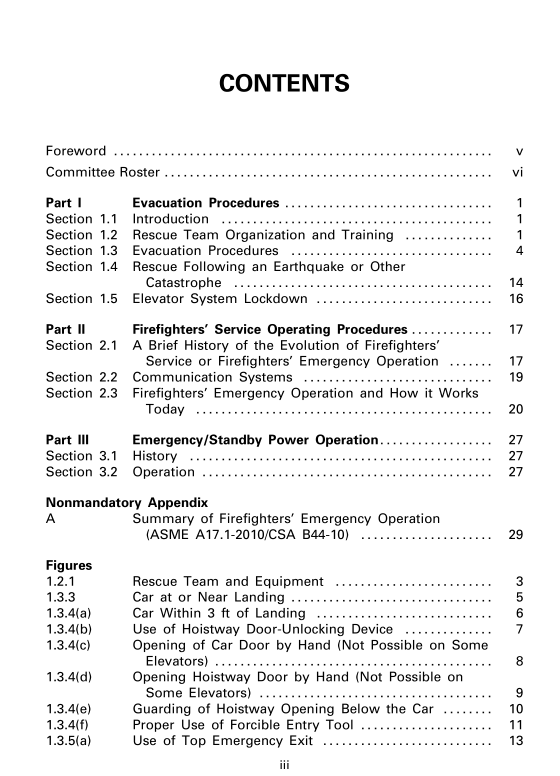ASME A17.4:2015 pdf download Guide for Emergency Personnel (Includes Evacuation Procedures and Firefighters’ Service Operating Procedures)
In Canada, in the 1975 edition of the B44 Elevator Code, a new clause was introduced as 3.12.15. This clause addressed the operation of an elevator under fire or other emergency conditions. Where elevators were required by the building code to be arranged for firefighters’ operation, the new requirements would apply. This included a two-position switch located in the main lobby adjacent to the elevators, as well as a two-position key switch in the elevator car. The two-position switch at the lobby had an “ON” position and an “OFF” position. The “OFF” position allowed normal operation of the elevator(s); the “ON” position would cause all elevators to return to the recall floor and park with open doors. There was also provision for connection of the fire alarm system to the elevators. When this feature was provided, the switch at the main floor lobby had an additional position marked “AUTO.” When in the “AUTO” position, a signal from the fire alarm would also initiate recall operation.
The two-position switch installed in all elevator cars was marked “ON” and “OFF.” The “ON” position would allow a firefighter to manually control the elevator to travel to other floors. The use of a red hat icon in the lobby on the outside of the elevators was introduced, which identified elevators that were in full compliance with additional building code requirements. ASME A17.1 and Canadian Standards Association (CSA) B44 codes describe two special landings with respect to firefighters’ service: the designated level or landing and the alternate level or landing. The designated landing is the preferred landing where the elevator cars will be sent for most efficient evacuation of passengers and best access for arriving firefighters. This is typically the lobby or ground floor of the building.
Recognizing that this landing may contain the source of the fire, a second (alternate) landing is defined as well. If the building smoke detectors at the designated landing are the initial trigger for Phase I, the elevators will be sent to the alternate landing, typically a level or landing other than the lobby, with access to a street level exit. Once the cars have returned to a given recall level (designated or alternate), subsequent smoke alarms are not permitted to move the car. During a fire, smoke may move through the building and trigger additional fire alarm-initiating devices (FAIDs). The secondary FAIDs would not be good indicators of the source of the fire, only the location of smoke. Only direct action by the firefighter(s) onsite (turn both “FIRE RECALL” switches to the “ON” position) after confirming the designated lobby is safe will allow the elevators to be moved to the designated landing. In the 1985 edition of the B44 Code, the “HOLD” position was added to the key switch in the elevator car.
This was provided to give the firefighter more control over the elevator car by locking it at the floor with the doors open, allowing the firefighter to leave the car unattended. The next major change in the operation of Phase II came in 1986, when the requirement for a three-position switch in the car replaced the previous requirement for a two-position switch (ASME A17.1).
The in-car switch required the addition of a “HOLD” position. This was provided to give the firefighter more control over the elevator car by locking it at the floor to which it was taken. It would remain there with the doors open and the “DOOR CLOSE” button inoperative. Turning the switch to the “OFF” position would return the car to Phase I and return it to the recall floor.
ASME A17.4:2015 pdf download
